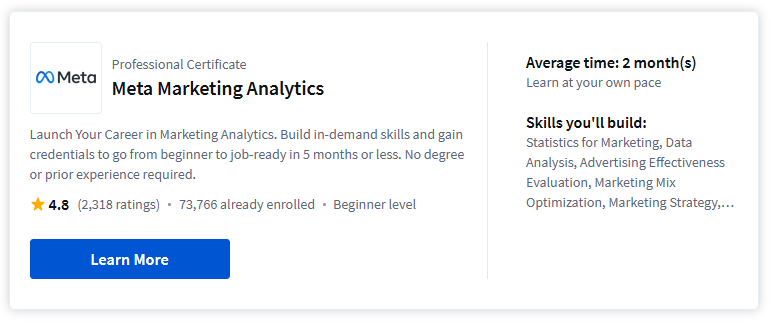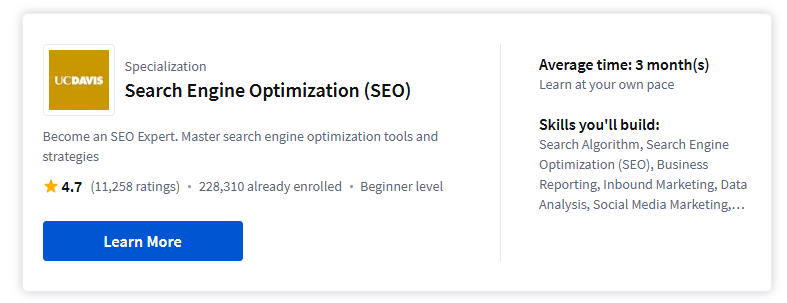Discover the marketing landscape of 2024 with insights on AI integration, short-form video popularity, UGC strategies, and the importance of authentic branding.
Because marketing is so closely tied to consumer behavior, no matter what area of marketing you specialize in, the effectiveness of your campaigns is susceptible to cultural ebbs and flows. To optimize your marketing plan for the modern consumer, it can be important to incorporate some trendier elements into your marketing strategy alongside the more tried-and-true efforts.
In this article, we’ll discuss the top marketing trends of 2024, which span social media marketing, digital marketing, brand marketing, and more. As you read through these trends, remember to keep your unique consumer base in mind because not all of these trends will necessarily translate across all audiences.
To help you determine your consumers’ identities and foundational strategies for reaching them, consider enrolling in the University of Pennsylvania’s top-rated crash course Introduction to Marketing.

Top marketing trends of 2024
To identify the top marketing trends, we researched a range of marketing reports and studies across several areas of marketing. Trends worth keeping in mind as you develop your marketing plans are:
- Artificial intelligence (AI) is boosting effectiveness and efficiency.
- Short-form video content, like TikTok, is driving social strategy.
- User-Generated Content (UGC) is increasing brand awareness.
- Community efforts and genuine branding encourage consumer trust.
- Quality editorial content persists.
- Case studies continue to drive brand recognition and sales lead generation.
- Search engine changes are shifting search engine optimization (SEO) strategies.
- AI-powered chatbots are expanding conversational capabilities.
- Personalization is enhancing the user experience.
Let’s take a closer look at each of these trends and the data that informs them.
1. AI boosts effectiveness and efficiency.
AI advancements have made a big impact on marketing. According to HubSpot’s State of Marketing Report 2024, 64 percent of marketers are already using AI and automation [1]. What’s more, consulting firm Gartner predicts that 80 percent of advanced creative roles in marketing will be tasked with using GenAI to enhance their marketing efforts by 2026 [2].
Two areas where AI is frequently appearing in marketing workflows are content production and marketing analytics.
GenAI for content production
Many marketers use generative AI (GenAI) across different stages of content creation, estimating that they save about three hours of work per piece of content, with 84 percent of those using AI reporting higher efficiency when creating content, 82 percent reporting producing “significantly more” content, and 56 percent reporting increased content performance [1].
You can use GenAI tools like ChatGPT or Google Gemini to generate content ideas, build briefs and outlines, draft content, or even write complete pieces.
- Build key GenAI skills with DeepLearning.AI’s Generative AI for Everyone course. In about six hours, you’ll learn how GenAI works, what it can be used for, and how to start incorporating this technology into your workflow.

Using AI for marketing analytics
Data-driven marketing isn’t a new trend, but the way marketers are getting their data is changing, thanks to AI. According to The Work Innovation Lab’s 2023 report, The State of AI at Work, 30 percent of workers already use AI for data analysis, and 62 percent of workers want to use AI for data analysis [3].
With the power of AI driving your analytics, you can learn about your target audience, identify trends, predict behaviors, and optimize your marketing campaigns faster and with more accuracy than you may have without AI assistance.
- Strengthen your marketing analytics skills with the Meta Marketing Analytics Professional Certificate. You’ll learn how to gather and analyze marketing data, and how to turn your insights into actionable strategies.

. Short-form video content drives social strategy.
As marketers increasingly target digital-first generations, they’re meeting them where they are: scrolling short-form videos on TikTok, YouTube, and Instagram. According to HubSpot, short-form video is the content type with the highest return on investment (ROI) and is primed to see the most growth in 2024, with 53 percent of marketers planning to increase their investment in TikTok, YouTube Shorts, and Instagram Reels [1].
- Develop foundational TikTok skills with Aptly’s Marketing with TikTok Specialization.

3. UGC increases brand awareness.
User-generated content (UGC) is any type of content that users post about your product on their social media profiles. The content itself may be similar to the type of content you’d see influencers or affiliate partners posting, but unlike those posts, businesses don’t work directly with the users to sponsor or produce the content. It’s more like word-of-mouth marketing, where users create content and share it with their audiences, and then businesses can leverage that content through tactics like social sharing or giveaways.
Traditional influencer marketing and affiliate marketing programs continue to have a place in marketing strategy, but marketing professionals are also increasingly relying on UGC as a cost-effective way to promote brand awareness in a way that feels organic to the typical viewer. According to Gartner, over 80 percent of consumers believe that UGC improves product discovery, brand trust, and experience [2].
- Build important social media marketing skills with the Meta Social Media Marketing Professional Certificate. Here, you’ll learn how to create an authentic brand across various social media platforms and build effective social media campaigns.

4. Community efforts and genuine branding encourage consumer trust.
Authenticity is the third-highest value US consumers identify with, according to Gartner [2], and nurturing a genuine brand voice is going to become increasingly important as AI-generated content becomes more prevalent in online spaces.
The modern marketer’s response: lean into emotional connections with community-building efforts. A 2024 report from marketing platform TINT found that 70 percent of marketers agree that community building is key for customer retention and that 82 percent of consumers are more likely to purchase new products from a company with an engaging online community [4].
- Learn how to build strong brands with the University of London’s top-rated Brand Management: Aligning Business, Brand and Behaviour course.

5. Quality editorial content persists.
Marketers will continue to invest in editorial content, like blog posts and podcasts, to generate engagement, support conversions, and promote thought leadership. According to HubSpot, 82 percent of marketers surveyed plan to increase or maintain their investment in podcasts and audio content, and 92 percent plan to increase or maintain their investment in blogging in 2024 [5].
- Gain in-demand digital marketing skills with the Google Digital Marketing & E-commerce Professional Certificate. You’ll explore the fundamentals of digital marketing, ground your performance with analytics, and learn about various marketing channels.

6. Case studies drive brand recognition and sales leads.
More traditional content marketing, like case studies, are typically used to increase brand recognition and drive lead generation, particularly for B2B marketing. In 2024, case studies will continue to show up in marketing strategies. HubSpot found that 26 percent of marketing teams already use case studies in their content marketing strategy, and 87 percent of marketers plan to increase or maintain their investment in case studies [5].
- Develop key content marketing skills with Northwestern University’s Content Strategy for Professionals Specialization, where you’ll learn about engaging your audience, managing content, and maximizing your impact.

7. Search engine changes shift SEO strategies.
With AI-powered enhancements to popular search engines, Gartner predicts that brands will see a 50 percent decrease in organic search traffic to their websites by 2028 [2]. Despite the shifting landscape, HubSpot reports that 92 percent of marketers plan to increase or maintain their investment in SEO in 2024 [5].
In addition to evolving historical strategies, SEO teams are increasingly expanding into video, image, and, in some cases, audio search content, aiming to prioritize a delightful customer experience while capitalizing on all aspects of Google and Bing’s latest developments.
- Learn about the importance of SEO with the University of California, Davis’ Search Engine Optimization (SEO) Specialization. By the end of the program, you’ll understand SEO fundamentals, how to optimize your website, and some advanced tactics.

8. AI-powered chatbots expand conversational capabilities.
Chatbots and virtual assistants are providing consumers with high-quality answers to common or easily answered questions. With advancements in AI and natural language processing (NLP) technologies, it’s becoming easier for marketers to program and use these tools to increase efficiency without disrupting customer satisfaction. According to HubSpot, 58 percent of marketers plan to increase their investments in chatbots in 2024 [1].
- Learn how to build your own chatbot with IBM’s Building AI Powered Chatbots Without Programming.

9. Personalization enhances user experience.
AI is also enabling personalized experiences, which 96 percent of marketers say leads to repeat business, and 94 percent say increases sales, according to HubSpot [1]. Machine learning product recommendations or immersive experiences, like augmented reality (AR) features that allow users to “view” physical products in their space, tap into individual consumer preferences to unlock data-driven purchase decisions and increase customer satisfaction.
Still, this is an emerging digital marketing trend. HubSpot notes that while 73 percent of marketers agree that personalization is important, only 35 percent feel that their brand offers a personalized user experience [1].
- Advance your marketing AI skills with the Microsoft Copilot for Marketing Specialization, where you’ll discover how to leverage AI to better understand your customers.

Data collection and privacy policies shift targeting strategies
Alongside the interest in personalization, digital marketers are keenly aware of changing data collection and privacy policies that stand to change the way they learn about their audience. As Apple and Google phase out third-party cookies, businesses are exploring first-party data collection methods [1].
- Learn more about data privacy with Northeastern University’s Data Privacy Fundamentals course.

Keep advancing your marketing skills today
Learn how to keep up with the latest marketing trends with Coursera. Advance your skills with some of these top marketing Professional Certificates:
- With the Google Digital Marketing & E-commerce Professional Certificate, you’ll learn the fundamentals of digital marketing and e-commerce, develop insights with marketing analytics, and use marketing tactics across various channels to grow customer loyalty.
- With the Meta Social Media Marketing Professional Certificate, you’ll learn how to establish an online presence for your business, manage social media channels, and create and optimize social advertising campaigns.
- With the Meta Marketing Analytics Professional Certificate, you’ll learn how to collect, interpret, and analyze marketing data to optimize your marketing campaigns.



Article sources
Loaded 4 more items




